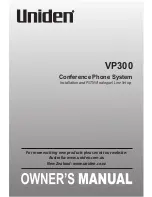
Auto-Attendant
Auto-Attendant, also known as video IVR, offers quick access to meetings hosted on MCUs, via a set of
visual menus. Participants can select menu options using standard DTMF tones (numeric keypad).
BFCP (Binary Floor Control Protocol)
BFCP is a protocol which coordinates shared videoconference features in SIP calls, often used by one
participant at a time. For example, when sharing content to others in the meeting, one participant is
designated as the presenter, and is granted the floor for presenting. All endpoints must be aware that the
floor was granted to that participant and react appropriately.
Bitrate
Bitrate measures the speed of data flow, measured in kbps. Higher video resolutions require higher
bitrates to ensure the video is constantly updated, thereby maintaining smooth motion. If you lower the
bitrate, you lower the quality of the video. In some cases, you can select a lower bitrate without noticing
a significant drop in video quality; for example during a presentation or when a lecturer is speaking and
there is very little motion. In video recordings, the bitrate determines the file size for each minute of
recording.
Call Control
on page 116.
Cascaded Videoconference
A cascaded videoconference is a meeting distributed over more than one physical MCU, where a master
MCU connects to one or more slave MCUs to create a single videoconference. It increases the meeting
capacity by combining the resources of several MCUs. This can be especially useful for distributed
deployments across several locations, reducing bandwidth usage.
CIF
CIF, or Common Intermediate Format, describes a video resolution of 352 × 288 pixels (PAL) or 352 x
240 (NTSC). This is sometimes referred to as Standard Definition (SD).
Continuous Presence
Continuous Presence enables viewing multiple participants of a videoconference at the same time,
including the active speaker. This graphics-intensive work requires scaling and mixing the images
together into one of the predefined video layouts. The range of video layouts depends on the type of
media processing supported, typically located in the MCU.
User Guide for Scopia XT Executive Version 3.2
Glossary of Terms for Scopia Solution | 105
















































